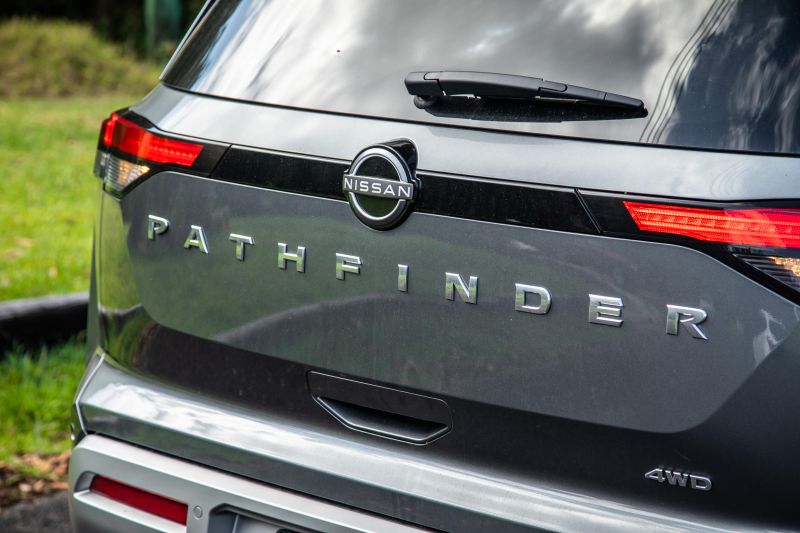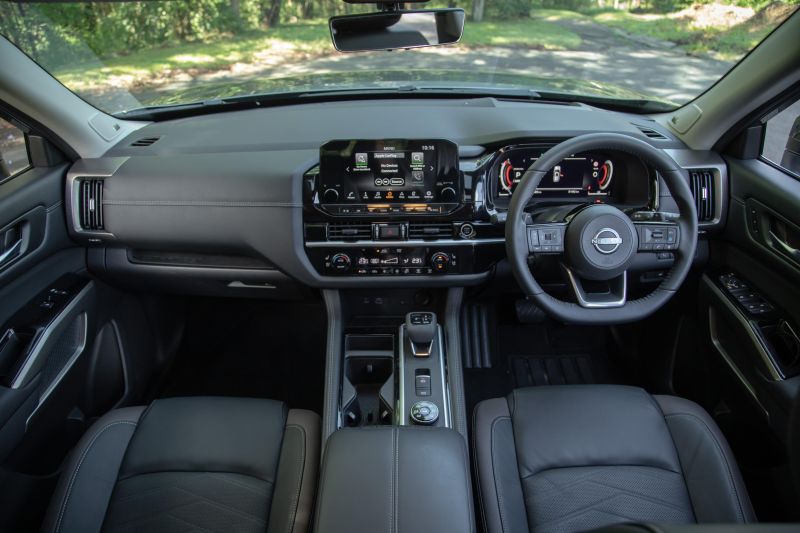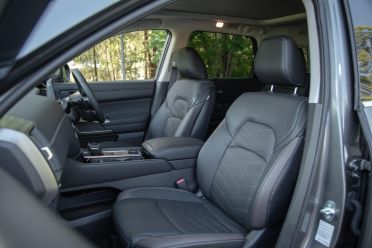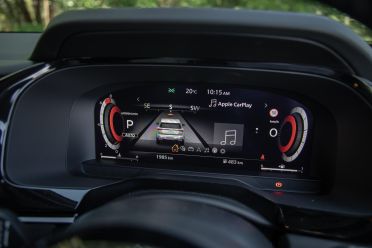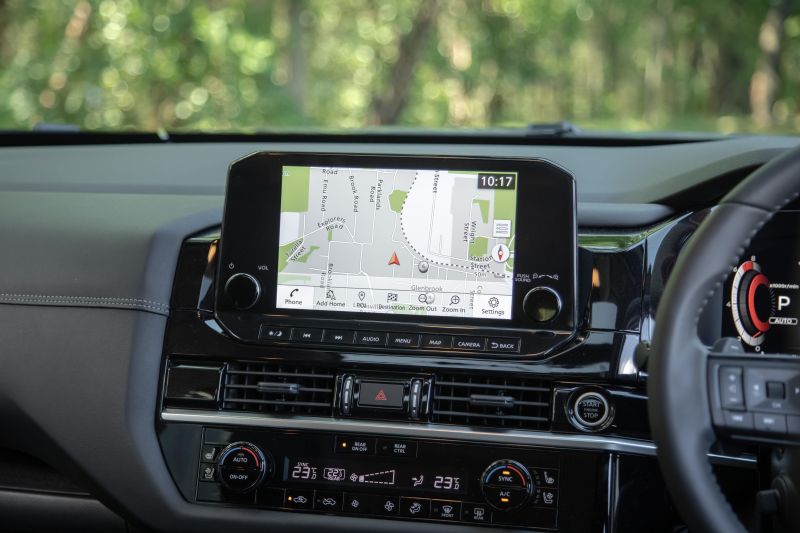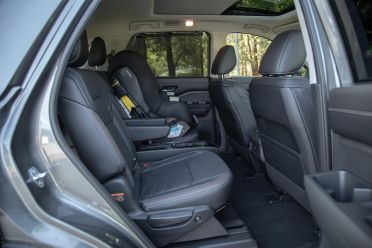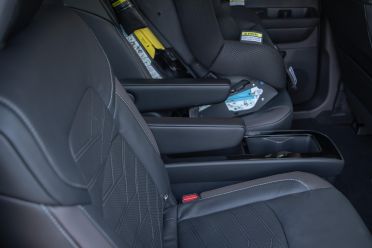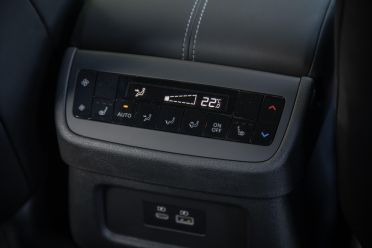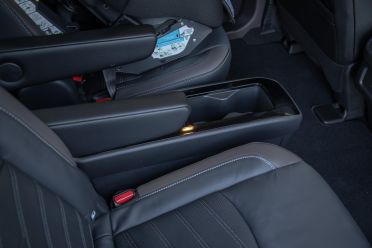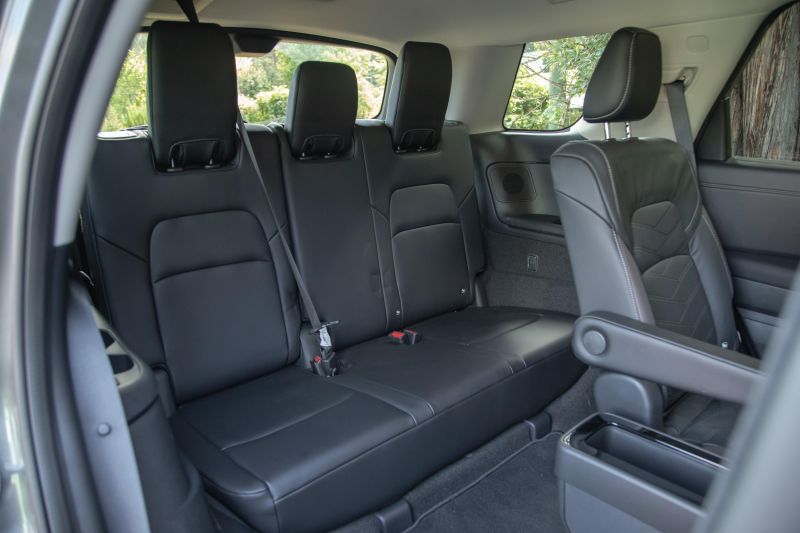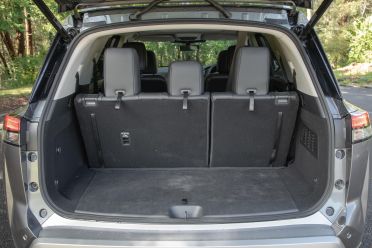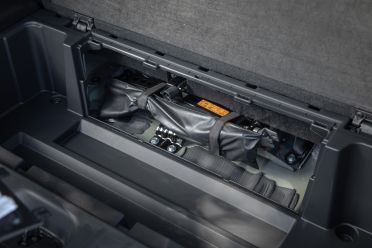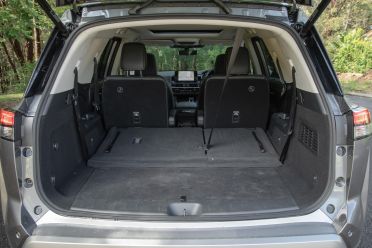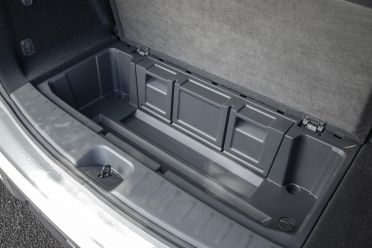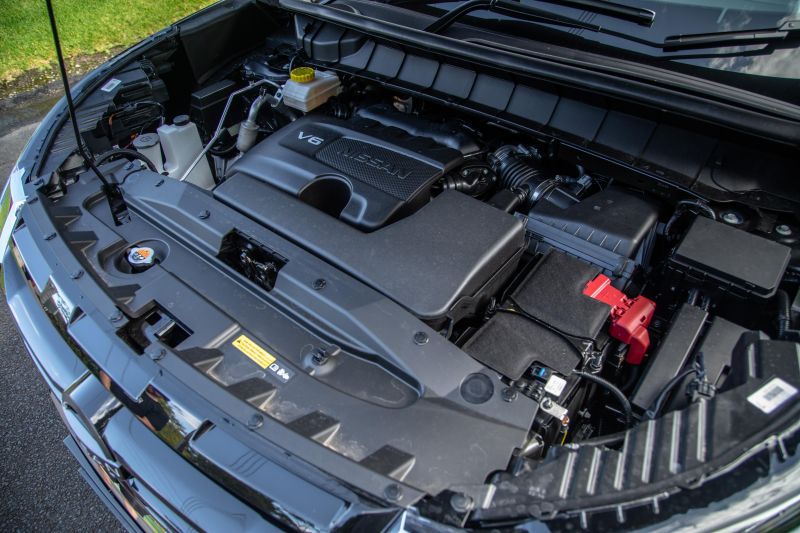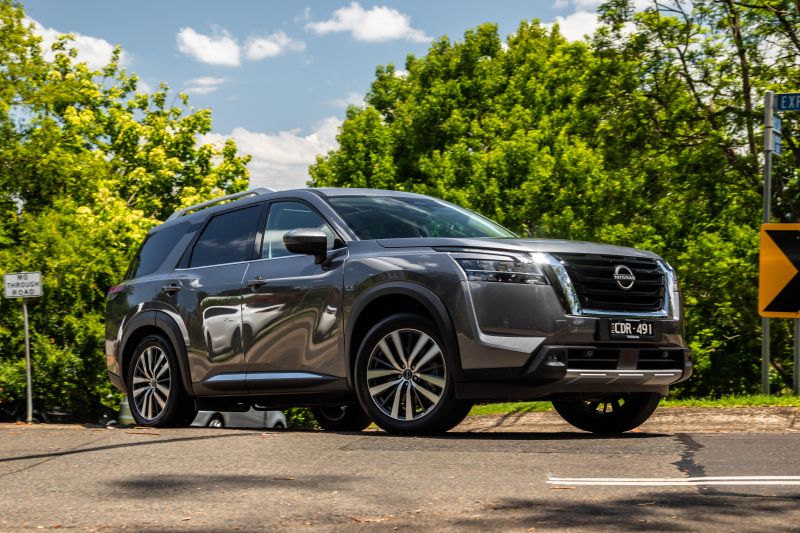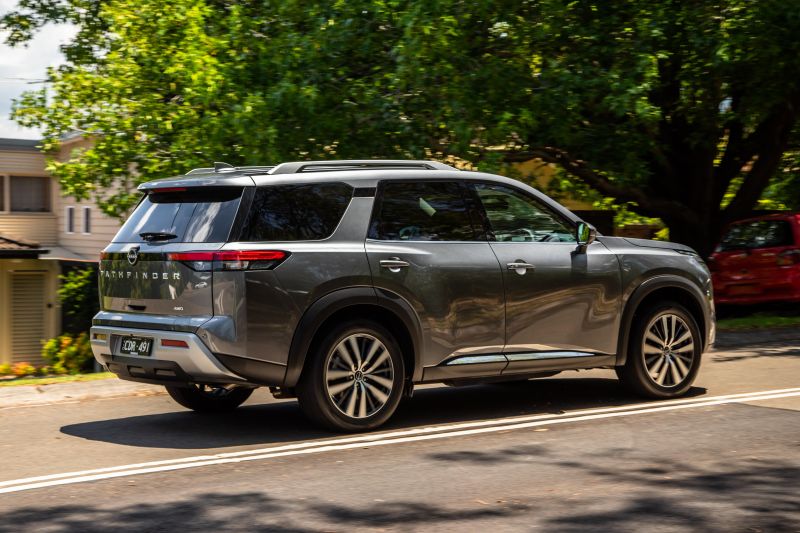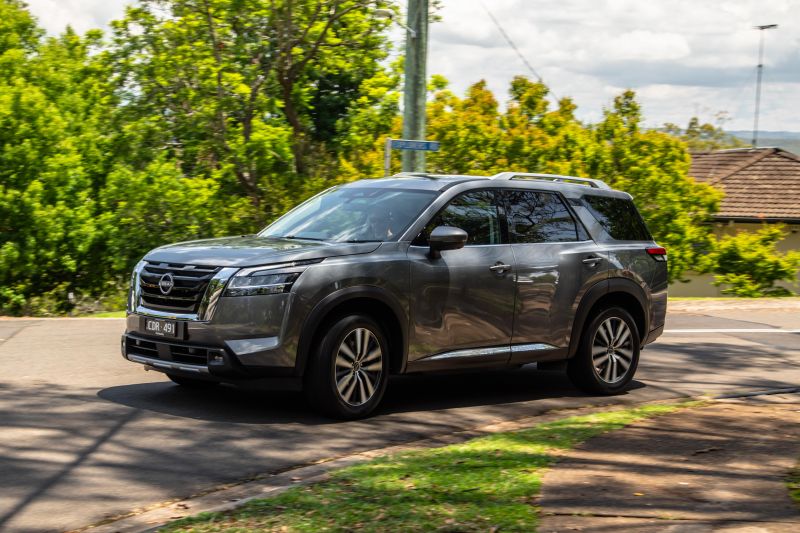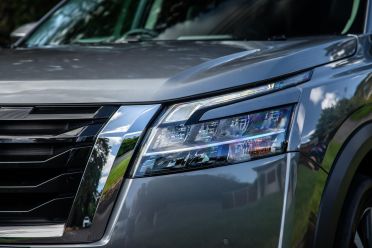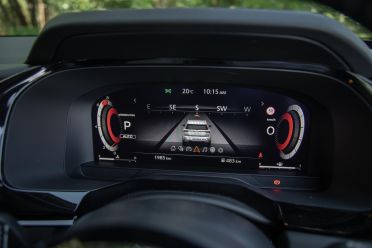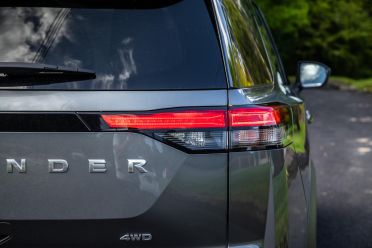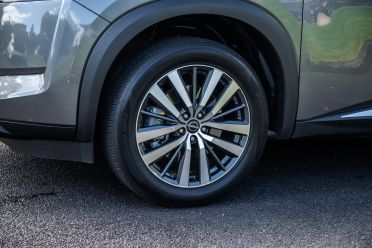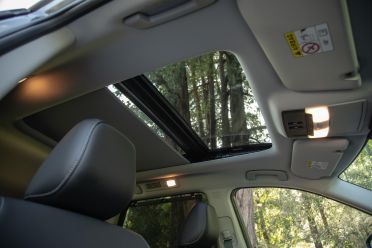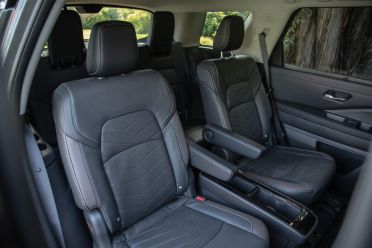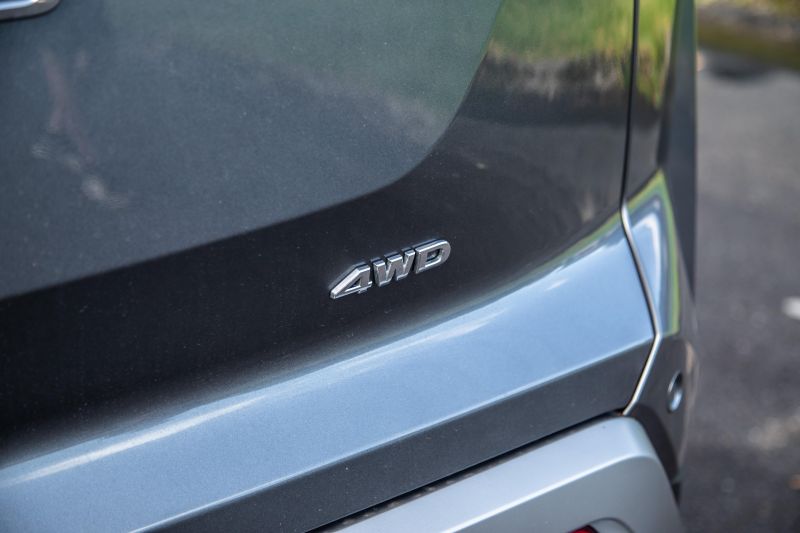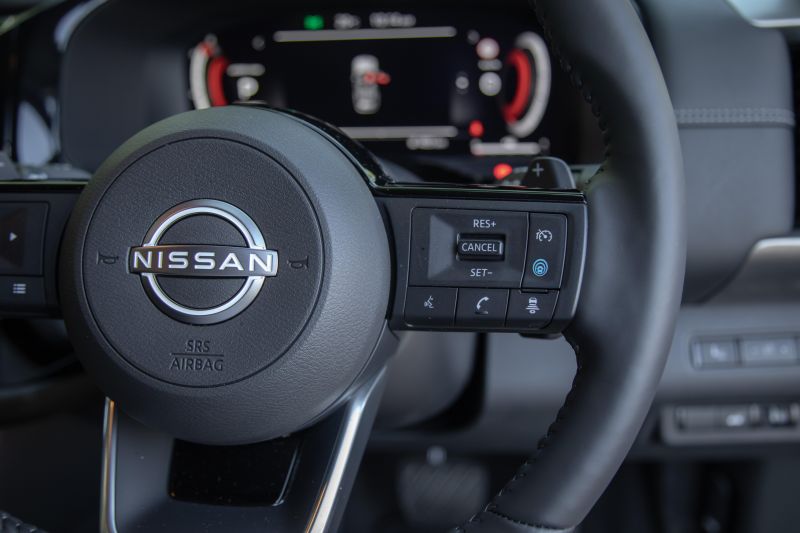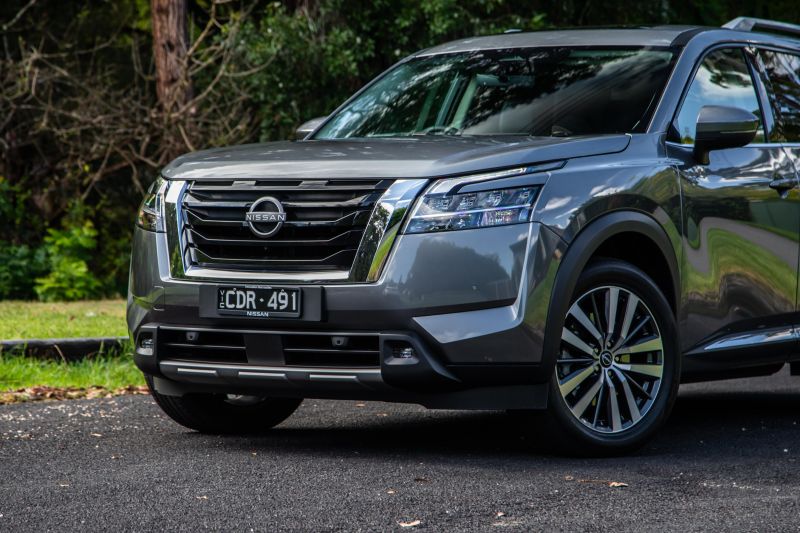The Nissan Pathfinder Ti-L is the range-topping version of the brand’s new-generation large SUV, but unlike every other ‘Pathie in the line-up, this one has seven seats instead of eight.
Why would you want to pay more for less? Well, maybe if you have no need for all eight seats, and you like to treat those in the second row to plenty of plushness, then this could be a good choice for you.
But with an engine that feels like it is stuck firmly in the 2000s and not the 2020s, and a price tag that is edging well into luxury SUV territory, this big family-focused model isn’t going to be for everyone.

How much does the Nissan Pathfinder Ti-L 4WD cost?
Too much, if you ask me.
Until recently, Nissan had a few more affordable Pathfinder models to choose from, but the brand has just axed the most appealing versions – the ST and ST-L.
That means the starting point for the 2023 Pathfinder range is now the Ti grade, which has also had some change – it doesn’t have a 2WD model available anymore, and its price has gone up, too.
And then there’s this one, the range-topping Ti-L, which unlike the model below, it has seven seats instead of eight.
2023 Nissan Pathfinder pricing:
- Pathfinder Ti 4WD: $71,490
- Pathfinder Ti-L 4WD: $81,490
Prices exclude on-road costs
That list pricing means you’re looking at closer to ninety thousand dollars for this car parked in your driveway. I think that’s too expensive.
But look, big SUVs cost a lot! A Hyundai Palisade in Highlander trim with a willing turbo-diesel engine and all-wheel drive is $79,900. But I think that’s a better car than this, and in my opinion diesel is a much better fit for a big family truck than petrol is.
What is the Nissan Pathfinder Ti-L 4WD like on the inside?
Does it feel like $80,000 worth of SUV inside the Pathfinder Ti-L? Not quite.
There is a bunch of good stuff about the interior, but it doesn’t necessarily make you go “Wow!” when you sit inside.
Usability of the controls is very good, there are buttons and dials for all the critical elements – so you don’t have to run through a touchscreen for everything. That’s one thing that I love, but that’s the case for all versions of this car.
There is also a rear air-conditioning control system integrated into the controls up front, and an additional control unit mounted in the back of the front armrest. Great for families, but again – every grade has that feature.
For the driver, there is a big digital display, which is relatively easy to come to terms with, and that’s an exclusive item in the Ti-L. There’s a lot of information there, and at times it can be a little bit overbearing with just how many data points are presented.
The steering wheel itself is nice to hold and a good shape, and also a good size for a car like this – the previous generation Pathfinder’s steering wheel was more like that you’d find in a bus.
Storage is phenomenal – if you need as much in-car storage as you would think that someone who is buying an SUV with seven or eight seats needs, then you won’t be disappointed. There are multiple storage trays and openings, and more than a dozen options for people to store a drink. That’s a US-built SUV trait.
The front zone also has a covered centre console bin which is very big, a wireless phone charger, as well as additional USB-C and USB-A charging ports.
The 9.0-inch touchscreen is relatively simple to get used to, but I’d want something even more sizeable to separate this spec from the lower ones. That said, for the majority of the time that I had it I was connected to wireless Apple CarPlay – and I had no issues whatsoever.
There’s also a head-up display, which is a nice touch. But I’ll say it again – you get that in the cheaper ones, too.
The driver has a rotary dial to select a bunch of different drive modes (Auto, Snow, Mud/Rut, Sand, Eco, Tow, Sport).
Second-row space is very good, and the seats both individually slide and have a recline function. That means that you can allow third-row occupants more room if you need to.
The captain’s chairs are comfortable, and I like there’s so much storage available – two cup-holders and bottle holders in each door, plus a pair of additional cupholders between the seats.
The push-button tilt slide mechanism for the second row seats makes accessing the back row a lot easier than in some other SUVs. Nissan calls it ‘EZ Flex latch and glide’, and it’s smart – the rear of the base of the seat pivots upward as does the backrest, and the entire thing slides forward to allow good ingress to the rearmost row.
Both second-row seats have ISOFIX and top-tether points. My daughter seemed to really like the fact they are stadium-style seats, so you sit quite high in the second row, getting a good view out towards the front windscreen or at the media screen.
She also thought the sunroof – which stretches to the second row – was great. And I thought the in-built sunshades on both rear doors helped make for more pleasant daytime trips.
The third row space is actually quite good, provided you’re realistic about who you want to fit in the back.
There are three seats, and you could fit three people across if you needed to. There’s also a single ISOFIX point with a top-tether in the passenger side third-row spot.
One problem I had with this car was the rear-centre seatbelt. It’s mounted in the headlining, and to use it you have to connect one part to a receiver in the seat base, then it becomes anchored in place and ready to use.
However, try as I might, it wouldn’t undo in the car that I was testing. So that meant that the seatbelt was in the way for a lot of storage situations. Also, that seatbelt does sit quite annoyingly over the shoulder or whoever is in the right-most third-row seat.
There are four additional cupholders in the third row, and a single USB port, not to mention overhead ventilation which you also get in the second row. And, when it’s time to get out of the third row, there are electric trigger switches for the second row seats to be pivoted back forward.
Boot space with seven seats in place is decent – Nissan states the figure is 205 litres but that seems small to me – but I like the fact the third-row can be moved for a little bit more height and depth. The two sections (it’s a 60:40 split) are recline adjustable.
There is a big underfloor storage cubby – which isn’t lined with carpet, so would be great for muddy shoes or wet, swimming gear – and a few shopping bag hooks and luggage attachment hooks as well. Underneath the boot floor, on the underside of the vehicle, there is a spare wheel – but it is a space saver.
With the third row seats folded there is quite a bit of space – easily enough for a family of four (that’s all you’ll fit in this car) to head away for a week. Again, Nissan states a volume of 554L, which is smaller than it seems.
One annoying little quirk – I kept hitting the wrong button on the electric tailgate – there’s one that unlocks or locks the car, and the other one opens the boot, and I kept getting the wrong one when I was trying to open the boot.
What’s under the bonnet?
The only choice for buyers for the Pathfinder’s powerplant is a 3.5-litre V6 petrol – is that good enough in 2023, and for the years to come?
I’d argue no, it isn’t. Especially considering the last model was available with a supercharged hybrid system. Admittedly, it wasn’t very good – but at least people had the option.
These days the “VQ35” 3.5-litre petrol V6 is the only choice, and it has a relatively meagre 204kW (6400rpm) and 340Nm (4800rpm), and as you can see you really need to rev this thing to get anything out of it.
The change that makes a bit of difference is a new nine-speed automatic transmission, which takes the place of the really revvable CVT auto in the last model.
This version of the Pathfinder wears the 4WD badge on the boot – but it’s not a proper 4×4, as there is no low-range gearing. But it is permanent on-demand four-wheel drive, meaning the electronics will determine when you need front-, rear- or all four wheels driven.
How does the Nissan Pathfinder Ti-L 4WD drive?
The drive experience in the new-generation Pathfinder doesn’t necessarily feel like a “big step forward” moment.
A lot of that comes down to the old-school engine, which isn’t necessarily as up to the task as it should be in some situations. Indeed, in combination with the new nine-speed automatic transmission, it can feel at times sluggish and slow to react.
Accelerating on the motorway, for example, I noticed that I really had to sink my foot down to the floor in order to get up to freeway speed for merges. In urban settings, it also feels like you’re constantly wringing its neck to get the most out of it.
This all comes down to the fact that this engine seemingly has quite low torque for such a heavy vehicle: 340Nm is not setting any standards, especially in something that weighs in excess of two tonnes (2083kg kerb).
Just think about loading it up with seven people and luggage, and you could draw the conclusion that this car will feel underdone in terms of the engine.
It can’t hide that weight in corners, either, because it does have some notable body roll as you pilot it through bends at pace.
The steering also takes a fair bit of arm-twirling at low speeds – for example, when parking or doing a U-turn – and the turning circle may be quoted as 11.8 metres, which is good for the class but it feels a bit larger than that.
On the flipside, the steering is actually quite good at lower speeds while driving (not parking), and I like the fact the steering wheel is a good size for this type of car – the previous model’s steering wheel felt too large, and in turn aided in the cumbersome nature of the vehicle.
On the roads I drove the Pathfinder, it rode quite well, considering it’s sitting atop 20-inch wheels.
Admittedly, it’s not the last word in refinement or comfort, but it did keep me and my family comfortable enough to not call it out for any particular misbehaviour.
What do you get?
Ostensibly, you get more when you pay more. But the crucial difference for the Ti-L version of the Pathfinder is that you in fact score one less seat.
Nissan isn’t alone in marketing this as a luxury experience for the second-row users, but it is something to consider that you cannot get a top-spec Ti-L with all of its additional standard gear (listed below) with an eight-seat layout, so that could rule it out if you just want the most you can get in a Pathfinder on all fronts.
That’s one of the most appealing factors for the Hyundai Palisade. You can choose the top-spec model with either seven or eight seats, and with petrol or diesel. Anyway…
Here’s a rundown of the standard equipment in the Pathfinder range, grade by grade, so you can see what you get in this spec versus the lower-spec versions – although some are currently not available.
Pathfinder Ti highlights:
- 8 seats
- 18-inch alloy wheels
- Roof rails
- LED headlights with dusk sensors and auto high-beam
- LED fog lights
- 9.0-inch touchscreen
- 10.8-inch head-up display
- 7.0-inch TFT instrument cluster display
- Wireless Apple CarPlay
- Wired Android Auto
- DAB+ digital radio
- Wireless phone charging
- 13-speaker BOSE audio system
- Satellite navigation
- Leather-accented seats
- 10-way power driver seat with lumbar control
- Heated front seats
- Heated second-row outboard seats
- Tri-zone climate control
- Power-folding exterior mirrors
- Keyless entry and start
- Power tailgate
- Remote start
- Rear privacy glass
- ‘EZ Flex’ latch-and-glide seating adjustment
- Tilt and telescopic steering wheel adjustment
- Leather-accented steering wheel
- Electric parking brake
- 2 x USB-A outlets
- 2 x USB-C outlets
- Third-row USB-A port
- 2 x 12V outlets
- ProPILOT lane-keep assist with traffic jam pilot
- Surround-view camera with moving-object sensor
Pathfinder Ti-L adds:
- 7 seats (incl. 2nd row captain’s chairs)
- 20-inch alloy wheels
- Panoramic sunroof
- Rain-sensing wipers
- Underbody protection
- Ventilated front seats
- Digital rear-view mirror
- ‘Wrap-around’ cabin ambient lighting
- 12.3-inch digital instrument cluster
- ‘Premium’ dash trim
- 12-way power driver seat
- 4-way power passenger seat
Think the extra gear is worth the $10K premium? Let us know in the comments.
Is the Nissan Pathfinder Ti-L 4WD safe?
This generation of Nissan Pathfinder was awarded a five-star ANCAP safety rating in 2022. So you can definitely consider this a safe family hauler.
Standard safety features include:
- Autonomous emergency braking (AEB)
- Pedestrian, Cyclist detection
- Junction assist
- AEB reverse
- Blind-spot assist
- Lane keep assist
- Lane departure warning
- Rear cross-traffic alert
- Traffic-sign recognition with over-speed prevention
- ProPILOT (adaptive cruise + lane centring)
- Tyre pressure monitoring
- 9 airbags incl. 3rd row curtains
- Reversing camera
- Rear parking sensors
- Surround-view cameras
How much does the Nissan Pathfinder Ti-L 4WD cost to run?
Nissan covers its range with a five-year, unlimited kilometre warranty, and there is capped-price servicing for the range as well for six years or 90,000km – whichever comes first.
If you prefer, you can prepay your maintenance for the first three, four, or five years. For the 4WD versions, the numbers are a little higher than 2WD models, but both include brake fluid (due at 24 months/30,000km).
| 3 years | 4 years | 5 years | |
|---|---|---|---|
| 2WD | $1370 | $2056 | $2452 |
| 4WD | $1433 | $2186 | $2581 |
If you’re more keen to pay as you go (which doesn’t make sense to me because you can prepay and roll that cost into your repayments… but you do you), then there is an option for such.
| 12mths15,000km | 24mths30,000km | 36 mths45,000km | 48 mths60,000km | 60 mths75,000km | 72 mths90,000km | |
|---|---|---|---|---|---|---|
| 2WD | $351 | $647 | $372 | $686 | $395 | $1553 |
| AWD | $351 | $710 | $372 | $753 | $395 | $1625 |
The kicker here is that sixth service for the Pathfinder, which is very expensive. I imagine there’ll be a lot of four-and-a-half-year-old ‘Pathies on the market, still with a little bit of warranty but with the known factor of the big, pricey 90,000km service looming.
As for fuel consumption? What surprised me was that this generation of Pathfinder is less efficient than the last. Typically brands aim to lower the fuel consumption average official combined figure between generations, but that didn’t happen for the new Pathfinder.
For the 4WD tested here, the official combined cycle fuel consumption figure is 10.5 litres per 100km, where its predecessors were rated at 10.1L/100km. Forgetting what the official number states, across a week of driving I saw a real-world return of 11.8L/100km and not once did I fill this vehicle to its capacity – the most I asked of it was my family of three doing a few short drives.
In other words, you can expect the figure to be higher if you use all seven (or eight, if applicable) seats.
CarExpert’s Take on the Nissan Pathfinder Ti-L 4WD
In my mind, if this spec of Pathfinder was $10,000 or $15,000 cheaper, it would feel about right.
The Ti-L has some plush inclusions, and it is roomy for families, but despite having a bunch of high-tech inclusions it feels antiquated in the drive experience, chiefly because of that ageing V6 engine.
If that doesn’t bother you, and the price seems reasonable, then it might be a good option. But I’d be checking out a Hyundai Palisade first.
Click the images for the full gallery











